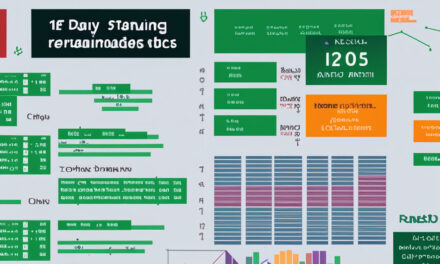In the world of forex trading, algorithmic trading has emerged as a powerful tool for both experienced traders and newcomers alike. By using automated trading bots, traders can take advantage of market opportunities and execute trades faster and more efficiently. This article will guide you through the process of building and testing your own trading bots, highlighting the benefits, strategies, risks, and best practices involved in algorithmic trading. So, let’s dive in and explore the fascinating world of algorithmic trading in forex.
Understanding Forex and Algorithmic Trading
Before delving into the intricacies of algorithmic trading, it’s essential to understand the basics of forex trading. Forex, also known as foreign exchange, is the global marketplace for trading national currencies against one another. Algorithmic trading, on the other hand, is the use of computer algorithms to automate the trading process. By combining these two concepts, traders can leverage technology to execute trades and make informed decisions.
Creating Your Own Trading Bot
Building your own trading bot may seem like a daunting task, but with the right approach, it can be a rewarding experience. The first step is to select a programming language that suits your needs. Popular choices include Python, Java, and C++. Once you’ve chosen a language, you can start writing code to implement your trading strategies. This involves defining entry and exit criteria, risk management rules, and other essential parameters. By programming your bot to adhere to your trading plan, you can automate the execution of trades and remove emotion from the equation.
Moreover, testing your bot is crucial to ensure its effectiveness. Backtesting allows you to simulate your trading strategies using historical data, giving you insights into how they would have performed in the past. Additionally, forward testing can help you evaluate your bot’s performance in real-time market conditions. By continuously refining and optimizing your bot, you can increase its success rate and profitability.
Benefits of Algorithmic Trading in Forex
Algorithmic trading offers several advantages over manual trading. Firstly, it enables faster and more precise execution of trades. With algorithms designed to respond quickly to market conditions, trading bots can seize opportunities as soon as they arise, reducing the risk of missing out on profitable trades. Additionally, algorithmic trading eliminates human error and emotional biases, allowing for more disciplined and consistent trading decisions.
Another advantage is the ability to backtest and optimize trading strategies. By using historical data, traders can evaluate the performance of their bots and fine-tune their strategies accordingly. This data-driven approach enhances the accuracy and effectiveness of the bot, increasing the chances of generating profits in the forex market.
Furthermore, algorithmic trading enables traders to diversify their portfolios and engage in multiple currency pairs simultaneously. By managing multiple bots or algorithms, traders can spread their investments across various markets, reducing the risk associated with relying on a single strategy or currency pair.
Strategies for Building and Testing Your Bot
When it comes to creating and testing your trading bot, there are several strategies you can employ. One popular approach is trend following, where the algorithm identifies and trades in the direction of established trends. Another strategy is mean reversion, which focuses on finding overbought or oversold conditions and taking advantage of price reversals.
Additionally, some traders utilize breakout strategies, where the bot identifies key support and resistance levels and enters trades when these levels are breached. Other strategies involve intricate combinations of technical indicators, such as moving averages, RSI, and MACD, to generate trade signals.
Regardless of the strategy you choose, it’s crucial to thoroughly test your bot before deploying it in live trading. This involves backtesting the bot using historical data to ensure its performance aligns with your expectations. It’s essential to consider factors such as slippage, spread, and market conditions during the testing phase to obtain a realistic assessment of your bot’s capabilities.
Common Pitfalls of Algorithmic Trading
While algorithmic trading offers numerous benefits, it’s essential to be aware of the potential pitfalls associated with it. One common mistake is over-optimizing the trading strategy based on historical data. It’s vital to strike a balance between performance during backtesting and adaptability to current market conditions. Over-optimization can lead to a strategy that performs well historically but fails to generate consistent profits in real-time trading.
Another challenge is the rapid evolution of the forex market. Market conditions, liquidity, and volatility can change significantly, rendering previously successful strategies ineffective. To stay ahead in algorithmic trading, it’s crucial to monitor market trends, adjust your strategies, and constantly update and improve your bots to adapt to the ever-changing market conditions.
Assessing Risks Involved in Automated Trading
While algorithmic trading can yield substantial profits, it’s important to understand and manage the risks associated with it. Market volatility, hardware and software failures, and connectivity issues are some of the risks to consider. Implementing effective risk management measures, such as setting stop-loss orders and position sizing based on risk appetite, can help mitigate these risks and protect your capital.
Moreover, it’s imperative to diversify your trading strategies and not rely solely on a single trading bot. By utilizing different algorithms and approaches, you can spread the risk and reduce the impact of any individual bot’s underperformance.
Exploring Different Types of Automated Trading Bots
When building your own trading bot, you have the flexibility to choose from various types based on your trading style and preferences. For example, some bots focus on high-frequency trading, executing multiple trades within milliseconds. These bots generally exploit small price discrepancies and rely on rapid execution to generate profits.
Other bots are designed for longer-term trading strategies, where trades are held for days, weeks, or even months. These bots often incorporate fundamental analysis and macroeconomic data in their decision-making process.
There are also bots that specialize in arbitrage trading, capitalizing on price discrepancies between different exchanges or currency pairs. These bots aim to profit from temporary price differences, exploiting inefficiencies in the market.
Using Automated Trading Bots to Enhance Your Trading Efficiency
Automated trading bots can significantly enhance your trading efficiency by executing trades faster and more accurately than manual trading. By removing the emotional element from trading decisions, bots can execute trades based on predefined rules, avoiding impulsive and irrational behavior.
Bots also allow for 24/7 trading, as they can operate continuously without human intervention. They can monitor multiple currency pairs simultaneously, identify trading opportunities, and execute trades even when you’re not actively monitoring the market. This ensures that no lucrative trading opportunities are missed.
Disadvantages of Algorithmic Trading
While algorithmic trading offers numerous benefits, it’s important to be aware of its limitations. Firstly, algorithmic trading systems are not immune to losses. Market conditions can change rapidly, leading to unexpected losses even for the most sophisticated trading bots.
Additionally, algorithmic trading requires technical knowledge and programming skills. Building and maintaining a trading bot can be complex, especially for traders with limited programming experience. It’s crucial to have a solid understanding of coding, data analysis, and financial markets to build robust and reliable trading bots.
Best Practices for Building and Testing Your Own Trading Bot
When building and testing your own trading bot, it’s essential to follow best practices to maximize its effectiveness. Firstly, define clear rules and criteria for your bot’s trading strategy. These rules should be based on sound technical and fundamental analysis and align with your risk tolerance and trading goals.
Additionally, regularly update and refine your trading bot to adapt to changing market conditions. Monitor the performance of your bot in real-time and adjust its parameters and strategies as necessary. Stay informed about the latest developments in the forex market and utilize cutting-edge technology to enhance your trading bot’s capabilities.
Lastly, always test your bot thoroughly using historical and real-time market data. Backtesting and forward testing are crucial to fine-tune your bot’s performance and assess its effectiveness. Remember, a well-tested and continuously optimized trading bot can be a lucrative asset in your forex trading journey.
Conclusion
In conclusion, algorithmic trading in forex is a powerful tool that can enhance your trading efficiency and profitability. Building and testing your own trading bots allows you to automate your trading strategies, eliminate emotional biases, and take advantage of market opportunities. However, it’s important to understand the risks and limitations associated with algorithmic trading and to follow best practices when building and testing your bots. By combining technical knowledge, data analysis, and continuous optimization, you can unlock the full potential of algorithmic trading in forex and embark on a successful trading journey.






